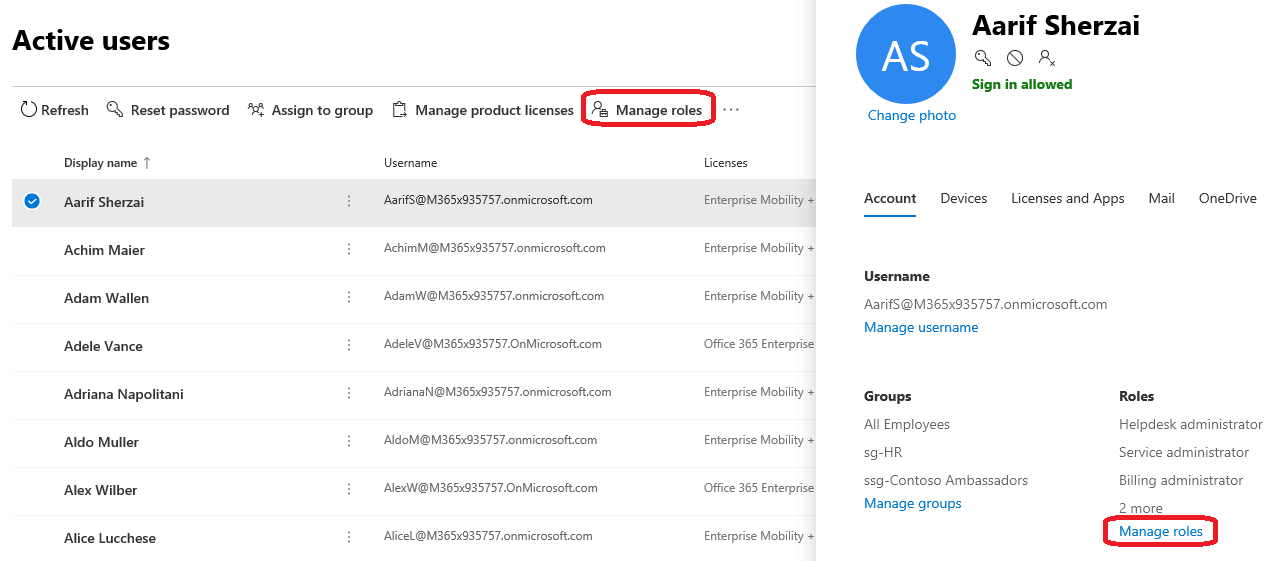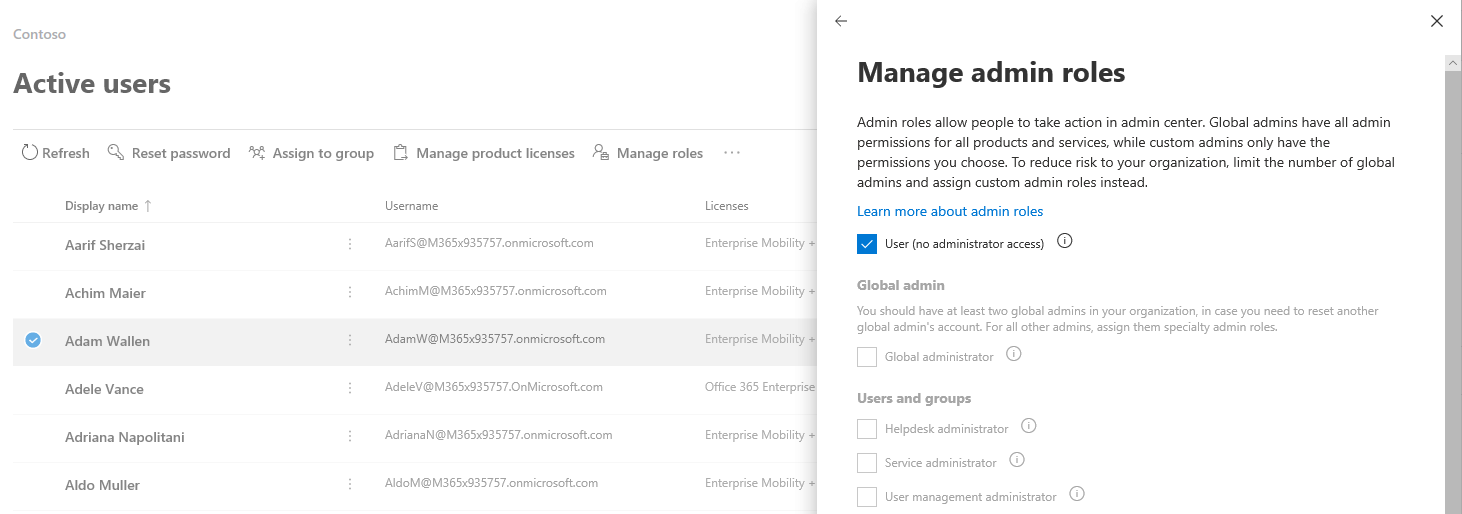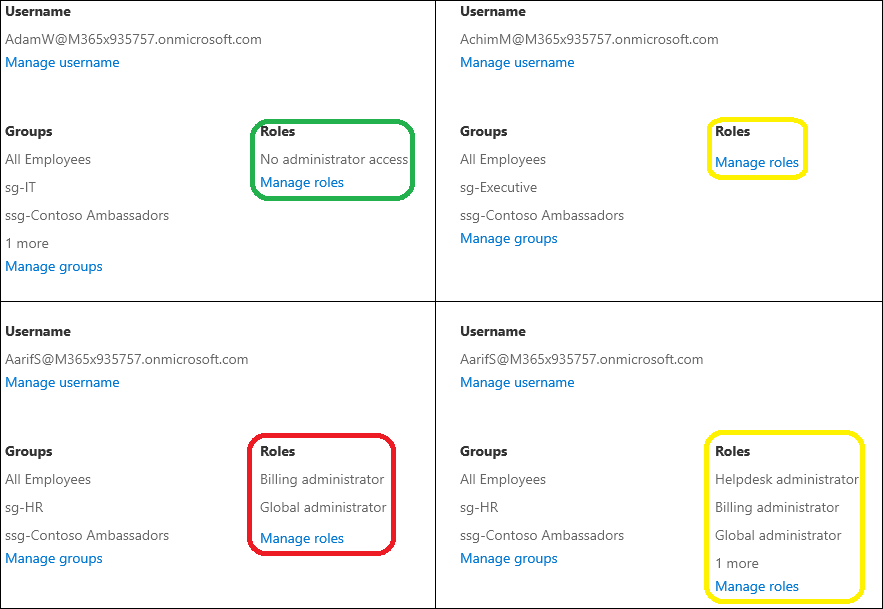The new Microsoft/Office 365 Admin Center was announced back at Ignite and has been available as public preview since October last year. In its initial release only a handful of pages featured the new design, as covered in my first look article, but the team has been slowly building on it and has kindly provided us with a page where we can monitor the progress. Over the past few months, new functionalities have been incorporated into the portal, such as the global Search box, the Export button on the Active users page, overhaul of the Billing and Subscriptions pages, new cards and more. On the other hand, the majority of pages still has the look from the old portal and the contrast between say the Active users and Deleted users page is a bit irritating.
One recent change I would like to focus on is the overhauled Manage roles UI, which you can access by selecting the user and pressing the corresponding button on top, or by opening the user’s details pane and clicking Manage roles, as shown below:

The new UI looks snappier and features more interactive elements compared to the old one, such as the help tooltips with role descriptions. If the user you’ve selected has no role assigned, the “User (no administrator access)” checkbox will be ticked and the rest of the UI will be grayed out/disabled. In order to assign a role, you first need to “untick” this checkbox, at which point all other UI elements will light up. Then, you need to select one or more of the available roles, grouped by sections such as Global admin, Users and groups, Billing, Common specialist roles or Additional roles. You can remove a given role by “unticking” it, and should you want to remove all roles, select the top-most “User (no administrator access)” entry.

While the UI still doesn’t list all the admin roles available in Azure AD, such as the Application admin, some improvements have been made on that front as well. For example, over at the details pane you might be able to see an indication of any additional roles assigned, as shown on the below screenshot. The first user, AdamW has no roles assigned, while AchimM has just the Application admin role assigned. The Manage roles pane will not have the Application admin role listed, but also will *not* have the “User (no administrator access)” checkbox selected, indicating the additional role assignment. This fact, and the different way information is presented on the details pane might give you a clue about the additional role. Of course a proper mention of the role or at some text along the lines of “one additional role assigned” would be better.

The bottom two parts of the screenshot illustrate another inconsistency. In both cases the same user (AarifS) is displayed and in both it has the Application admin role assigned. Depending on the number of “recognized” roles assigned however, you might or might not get a clue of this additional role. Overall, some steps have been made in the correct direction, but some additional refinements are needed.
Whether you will find the new UI improved or not is a bit subjective of course. The important part is that most of the issues that plagued the old experience, which I have detailed in this article, have now been addressed. “Unrecognized” roles are no longer being stripped while toggling a “recognized” one on or off, and the similar issue that caused the Global admin role to be stripped when multiple admin roles were assigned has been resolved as well.
One note is due here. If you have any “unrecognized” admin role assigned and you select the “User (no administrator access)” checkbox, any and all roles will be removed from the user. As noted above, whenever the user has been assigned an “unrecognized” role, there will be subtle clues in the UI. One of these clues is the fact that the “User (no administrator access)” checkbox is not ticked, so selecting it and confirming the changes is assumed as a signal that you want *every* admin role stripped from the user, including ones not listed here.
Of course, one shouldn’t expect everything to work in the same manner across the board, and if you select more than one user and press the Manage roles button, you will be presented with the old UI. Yes, the one that suffers from the issues detailed in my previous post. Screenshot below:

P.S. Boy, does the new block editor in WordPress suck…
I have disabled block editor first thing after the update 😀